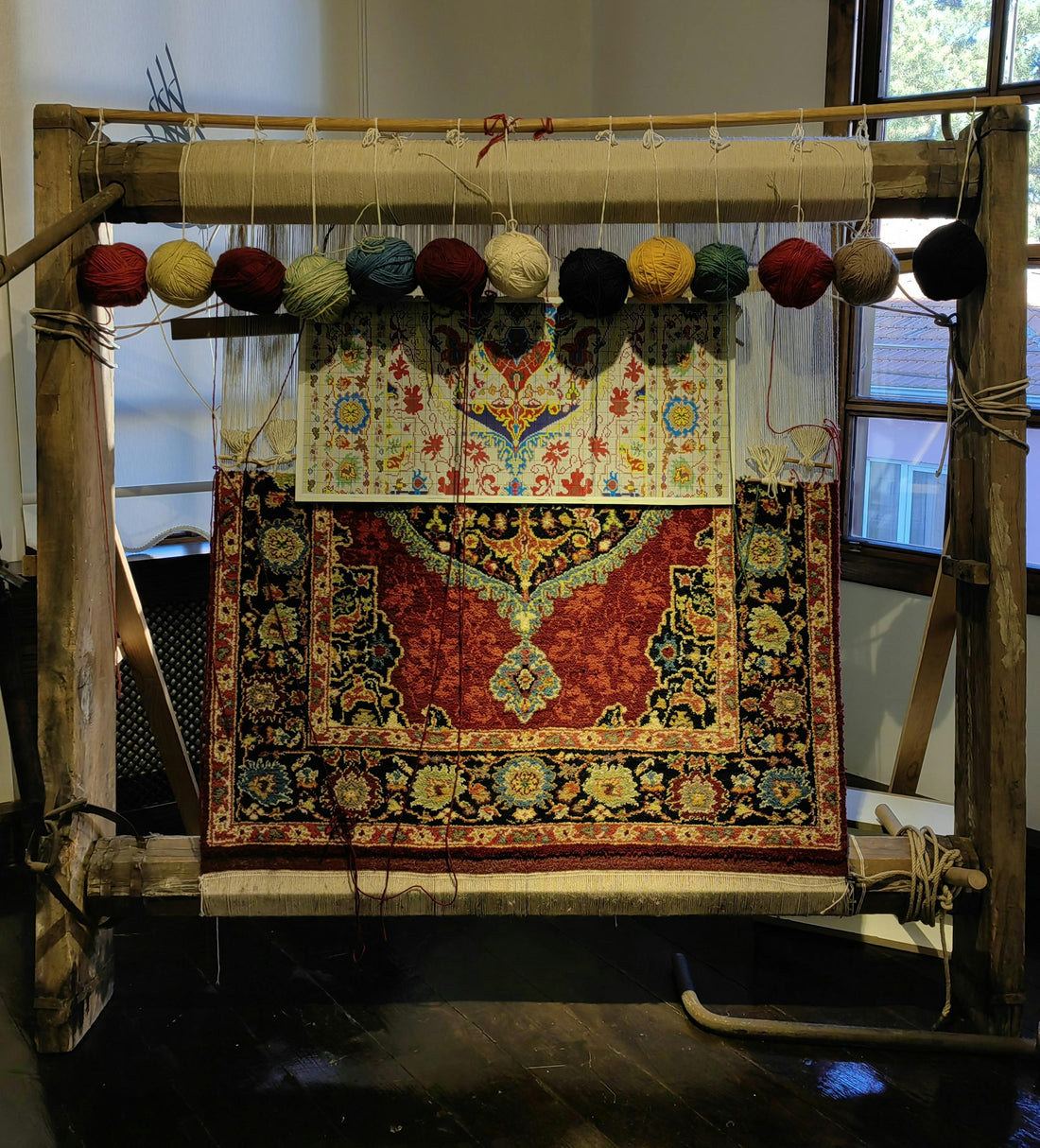
Hand-Knotted Rug Structure

Hand-Knotted Rug Structure: A Detailed Guide to Craftsmanship and Quality
When choosing a hand-knotted rug, understanding its structure is essential to appreciating the artistry and craftsmanship that goes into its creation. Below, we explore the key structural elements that define a high-quality rug.
1. Construction
Hand-knotted rugs, often referred to as oriental rugs, are created using time-honoured techniques passed down through generations. These rugs are crafted on specialised vertical frame looms, where artisans knot each strand of wool, silk, or other fibres by hand. This meticulous process, which can take months or even years, results in unique and intricate designs.
The quality of a hand-knotted rug is determined by several factors:
This artisanal approach ensures that every rug is a one-of-a-kind masterpiece, celebrated for its boundless design and colour variations.
2. Foundation
A rug’s foundation provides the structural base that supports its intricate design and contributes to its durability. This foundation is composed of two main elements: the warp and the weft. Cotton is commonly used for the warp and weft threads due to its strength and flexibility. A strong foundation ensures that the rug retains its shape and withstands years of use.
Warp
The warp refers to the vertical threads stretched tightly across the loom. These threads form the backbone of the rug, running from top to bottom. The density and alignment of the warp threads directly impact the rug’s fineness and durability.
Weft
The weft comprises the horizontal threads woven across the warp. These threads interlace with the warp to create the rug’s base structure. The weft’s tightness and material contribute to the overall stability and texture of the rug.

Together, the warp and weft establish a stable canvas, allowing artisans to add decorative elements such as the pile in pile-woven rugs or intricate patterns in flat-woven designs.
3. Pile Height
Pile height refers to the length of the fibres that extend above the rug’s foundation. This characteristic influences both the rug’s texture and appearance. Pile heights can range from:

4. Knot Count
Knot count is a crucial metric for assessing a rug’s quality. It refers to the number of knots per square inch (KPSI) in the rug. Higher knot counts indicate finer craftsmanship and more detailed designs. General categories include:
5. Composition
The composition of a rug refers to the materials used in its construction. Common materials include:

6. Backing Material
The backing material adds stability to the rug and protects its foundation. High-quality hand-knotted rugs often have a natural, unbacked underside, revealing the intricate knots and craftsmanship. For machine-made rugs or some speciality designs, backing materials like textile or felt are used.
Some helpful tips for to ensure you find a rug that remains a long-lasting centrepiece:
- Look for key terms like "hand-knotted oriental rugs," "high knot count rugs," and "luxury rug materials."
- Pair these rugs with décor themes like "modern classic interiors" or "rustic elegance."
- Regular maintenance ensures the longevity of your investment.
Conclusion
The structure of a hand-knotted rug is a testament to the skill, precision, and dedication of the artisans who create them. From the construction and foundation to pile height and composition, each element plays a vital role in the rug’s overall quality and appeal. By understanding these components, you can make an informed choice and invest in a timeless piece that will enhance your space for years to come. Including keywords such as "high-quality hand-knotted rugs" and "durable luxury rugs" in your search can guide you towards finding the perfect addition to your home.
